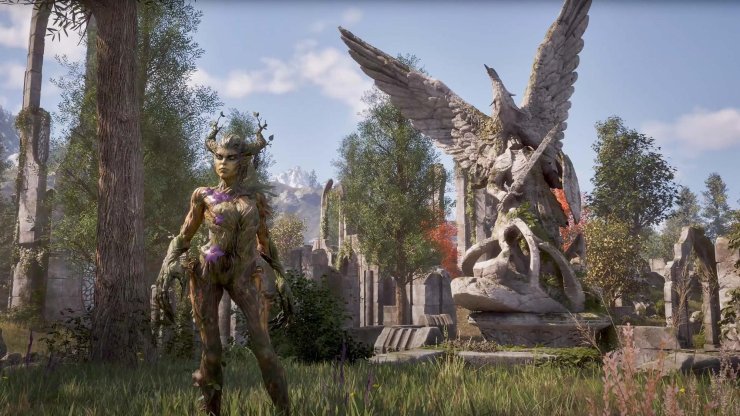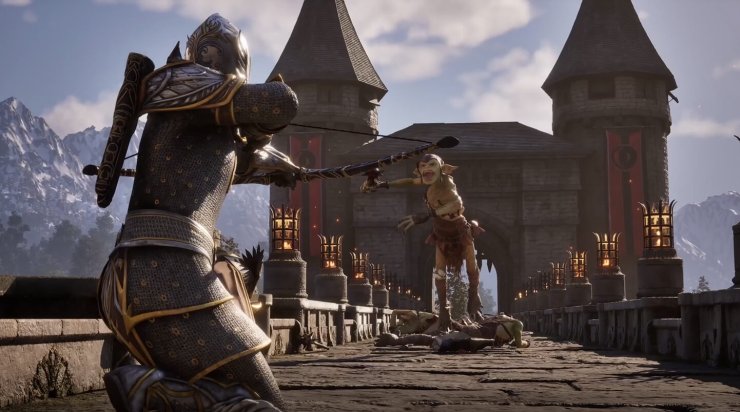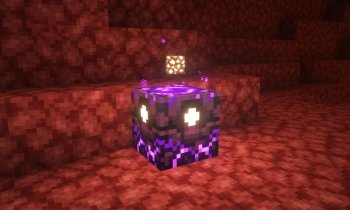The best settings for The Elder Scrolls IV: Oblivion Remastered depend on your hardware, but the goal is to balance performance (FPS) and visual quality, as the game uses the demanding Unreal Engine 5.
The goal’s to get smooth gameplay without tanking your FPS, whether you’re rocking a beefy PC or something more basic like a Steam Deck. I’ve got you covered with settings for different setups, aiming for 60+ FPS where possible, plus some tweaks for high-end GPUs like the AMD Radeon RX 9070/9070 XT. Let’s dive in.

General Recommendations for Mid-to-High-End PCs
-
Resolution: Stick to 1920x1080 (1080p) for most setups; go 2560x1440 (1440p) if you’ve got a beastly GPU like an RTX 4080 or RX 9070. 1080p keeps things running smooth.
-
Window Mode: Fullscreen’s your best bet, but Windowed works if you’re juggling other apps.
-
Upscaling: Use AMD FSR, NVIDIA DLSS, or Intel XeSS on Quality or Balanced to boost FPS without making things look rough. FSR Balanced is solid for AMD cards; DLSS Quality for NVIDIA. XeSS Performance can look a bit blurry.
-
V-Sync: Turn it off to dodge stutters, but flip it on if you see screen tearing. Some AMD users say it helps with stutters.
-
Shadows: Set to Low or Off. Shadows in UE5 eat FPS for breakfast and don’t add much.
-
Anti-Aliasing: Skip it for weaker GPUs; use Native AA or Quality for high-end ones (like RX 9070 XT at 1440p). It smooths edges but hits performance hard.
-
Effects Quality: Keep it Low. Spell effects and particles aren’t worth the FPS drop.
-
Post-Processing: Low or Medium. Cuts down on heavy effects like bloom and ambient occlusion.
-
Textures: Medium if your GPU has 6–8GB VRAM; Ultra for 12GB+ (like RTX 4080 or RX 9070). Ultra at 1440p needs about 16GB VRAM.
-
Water Details & Ripples: Turn ‘em off. Water looks fine without eating your FPS.
-
View Distance: Medium. Keeps distant objects from dragging your performance down.
-
Ray Tracing (Lumen): Set to Low (software-based) or Off (SSR On for non-RT GPUs). Hardware Raytraced Lumen is gorgeous but needs a monster GPU (like RTX 4080 or RX 9070 XT) and still drops FPS (think 35–50 FPS on RTX 5090 at 2560x1600 without DLSS).
-
Motion Blur & Depth of Field: Off. These are just fancy extras that slow things down.
Performance Notes
-
These keep gameplay smooth in big open areas, where FPS can dip to 40–55 on an RTX 3070 Ti. Indoors, you’re looking at 90–100+ FPS.
-
For 1440p with RX 9070/9070 XT, crank it to Ultra with Native AA (9070 XT) or Quality AA (9070) for about 80 FPS.
-
UE5 open-world games like this can stutter outdoors. Dropping View Distance and Shadows helps.
-
Example: An i9-14900HX, RTX 4080, and 32GB RAM setup pulled 80–90 FPS at 1440p with these, with 1% lows at 65 FPS.
Settings for Low-End PCs

-
Resolution: 1280x720 or 1600x900. Lower res is a lifesaver for FPS.
-
Window Mode: Fullscreen.
-
Upscaling: FSR or XeSS on Performance. Skip DLSS if your card doesn’t support it.
-
V-Sync: Off.
-
Shadows: Off.
-
Anti-Aliasing: Off.
-
Effects Quality: Low.
-
Post-Processing: Low.
-
Textures: Low. Stay here if your VRAM’s under 6GB.
-
Water Details & Ripples: Off.
-
View Distance: Low.
-
Ray Tracing: Off (use SSR for reflections).
-
Motion Blur & Depth of Field: Off.
-
FPS Cap: Lock at 30 FPS if your FPS is all over the place.
Performance Notes
-
These are for bare-bones setups (like Ryzen 5 2600X, GTX 1070 Ti, 16GB RAM). You’ll get 30–40 FPS outdoors, 60+ indoors.
-
Open areas might stutter; try looking at the ground while moving to cut down on pop-in.
-
Shut down background apps to free up your CPU and GPU.
Settings for Steam Deck

-
Resolution: 1280x800 (Deck’s native res).
-
Upscaling: XeSS or FSR on Performance. XeSS looks sharper, but FSR’s less blurry in shadows.
-
Graphics Preset: Low.
-
Shadows: Off.
-
Anti-Aliasing: Off.
-
Effects Quality: Low.
-
Post-Processing: Low.
-
Textures: Low.
-
Water Details & Ripples: Off.
-
View Distance: Low.
-
Ray Tracing: Off (SSR On).
-
Motion Blur & Depth of Field: Off.
-
FPS Cap: 30 FPS to keep things steady.
Performance Notes
-
You’ll hit 30 FPS in towns and caves, but expect stutters and pop-in outdoors. It’s playable, but visuals take a hit.
-
Battery drain’s around 18W in closed areas. Don’t bother with Medium settings—it’ll tank performance.
-
UE5’s open-world issues make this a tough one for Deck, but it’s doable if you temper expectations.
Settings for ROG Ally / ROG Ally X
-
Resolution: 1600x900 (or 1280x720 for better FPS).
-
Upscaling: FSR with Frame Generation on (deal with some lag/stuttering).
-
Graphics Preset: Low.
-
Shadows: Off.
-
Anti-Aliasing: Off.
-
Effects Quality: Low.
-
Post-Processing: Low.
-
Textures: Low.
-
Water Details & Ripples: Off.
-
View Distance: Low.
-
Ray Tracing: Off (SSR On).
-
Motion Blur & Depth of Field: Off.
Global Illumination Fix
-
Grab the fix files from the source and drop them in:
-
Game Pass: XboxGames\The Elder Scrolls IV- Oblivion Remastered\Content\OblivionRemastered\Binaries\WinGDK
-
Steam: OblivionRemastered\Binaries\Win64
-
Performance Notes
-
Expect 25–30 FPS at 900p with stutters in open areas. Frame Generation helps but adds lag.
-
It’s not the smoothest experience; you’re better off with a stronger device if you want it to shine.
High-End GPU Settings (RX 9070/9070 XT, RTX 5090)
-
Resolution: 2560x1440 (RX 9070/9070 XT); 3840x2160 (RTX 5090 with DLSS).
-
Window Mode: Fullscreen.
-
Upscaling:
-
RX 9070: FSR Quality at 1440p.
-
RX 9070 XT: Native AA at 1440p.
-
RTX 5090: DLSS Quality at 4K.
-
-
V-Sync: On for RX 9070/9070 XT to cut stutters; Off with DLSS for RTX 5090.
-
Shadows: High.
-
Anti-Aliasing: Native AA (9070 XT, RTX 5090); Quality AA (9070).
-
Effects Quality: High.
-
Post-Processing: High.
-
Textures: Ultra (needs 16GB+ VRAM).
-
Water Details & Ripples: Medium or High.
-
View Distance: High.
-
Ray Tracing: Hardware Lumen on High (if supported); otherwise, Software Lumen on High.
-
Motion Blur & Depth of Field: Off (or High if you’re into it).
Performance Notes
-
RX 9070/9070 XT: Around 80 FPS at 1440p Ultra.
-
RTX 5090: 80–90 FPS at 4K with DLSS Quality, but only 35–50 FPS at 2560x1600 native with max settings (no DLSS). Stutters still happen outdoors.
-
Flip on V-Sync for AMD GPUs to keep stutters in check.
Additional Tips
-
Performance in Open Areas: FPS takes a hit outdoors because of UE5’s open-world demands. Wait till you’re out of the starting dungeon to judge performance.
-
Stuttering Fixes: UE5 stutters are a pain, and there’s no perfect fix. Lower View Distance, Shadows, and skip Ray Tracing to help. Keep your drivers fresh.
-
System Requirements: Minimum: Ryzen 5 2600X, GTX 1070 Ti, 16GB RAM, 125GB storage. Recommended: Ryzen 5 3600X, RTX 2080, 32GB RAM.
-
Gameplay Settings: Go with Adept difficulty for fair combat (damage is even for you and enemies). Higher difficulties just make enemies spongier, which can suck.
-
Visual Mods: The remaster’s UE5 visuals are a huge step up, but modders might drop performance tweaks on Nexus Mods like they did for the original. Keep an eye out.










Comments